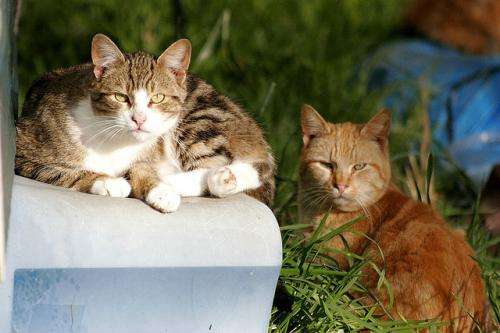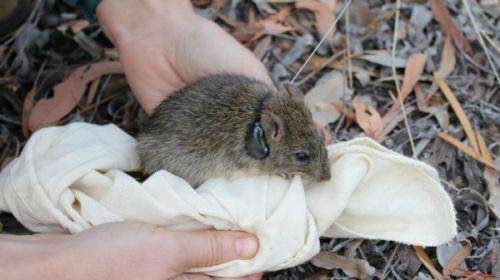Killer cats linked to local extinctions

Feral cats (Felis sylvestris catus) play a significant role in the extinction of small mammals in Australia's tropical savannah, and until the cats are controlled, researchers fear another wave of extinctions in northern Australia.
"Across Australia, feral cats kill at least 75 million native animals every night," says Dr Anke Frank, from the University of Tasmania and Australian Wildlife Conservancy (AWC).
Dr Frank says scientists in the Northern Territory and Western Australia collaborated to understand why small mammals are dramatically declining in northern Australia.
"We have a unique ecological heritage, with more than four in five mammals found nowhere else on the planet. That's something worth protecting.
"We needed to find direct evidence of the impact of feral cats on small mammals, such as native rodents and marsupials, to help us design strategies to prevent species declines and extinctions."
In their study, researchers established two 12.5 hectare enclosures in tropical savannah in the Northern Territory. Each enclosure was divided in half, with cats allowed access to one half but not the other.
They introduced 20 native long-haired rats (Rattus villosissimus) into each of the four compartments and monitored rat demography by mark-recapture analysis and radio-tracking, and predator incursions by camera surveillance and track and scat searches.
Rat populations in both predator-proof enclosures survived over the 18-month study, but in predator-accessible compartments, the rats were eradicated in just three months and 16 months. Where there were more dingos, cats took longer to extirpate the mammal population.

Need for feral-free 'arks'
Dr Sarah Legge, AWC's Chief Scientist, says there are a number of ways to protect Australia's small mammals, including setting up 'arks' on islands, or in fenced and feral-free areas on the mainland.
"This would ensure the most vulnerable species don't become extinct in the next 20 to 30 years, while we figure what out to do with feral cats across the mainland," says Dr Legge.
"We also need to limit emigration from cats living in or near towns, by encouraging desexing programs for pet cats, and the humane control of urban stray cats."
Other methods to help reduce the impacts of feral cats include keeping dingos present in the landscape; exploring options for direct control of cats, including new baiting systems, cat-specific diseases and guardian dogs; and managing threats in the landscape, such as fire, introduced herbivores and weeds, all of which impact small mammals by amplifying the pressure from feral cats.
More information: Frank, A. S. K., Johnson, C. N., Potts, J. M., Fisher, A., Lawes, M. J., Woinarski, J. C. Z., Tuft, K., Radford, I. J., Gordon, I. J., Collis, M.-A., Legge, S. (2014), "Experimental evidence that feral cats cause local extirpation of small mammals in Australia's tropical savannas." Journal of Applied Ecology. doi: 10.1111/1365-2664.12323
Journal information: Journal of Applied Ecology
Provided by Science Network WA



















